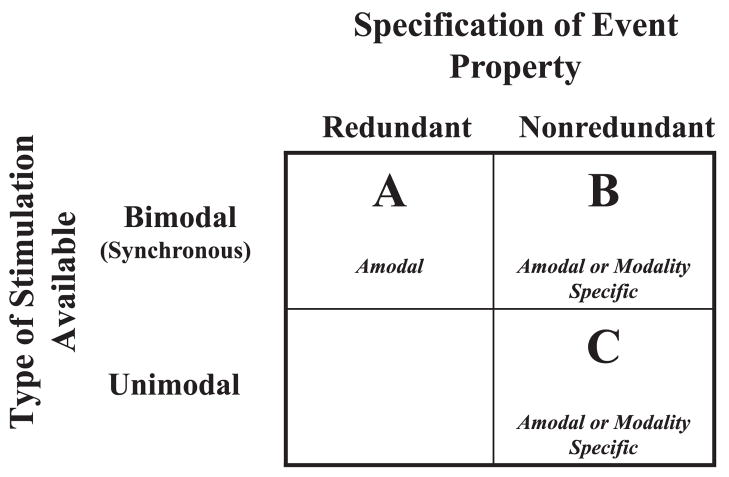FIGURE 1.
Predictions of the intersensory redundancy hypothesis: Facilitation of attention and perceptual processing for a given event property as a function of whether the property is redundantly versus nonredundantly specified and whether the type of stimulation available for exploration is bimodal versus unimodal. Detection of a redundantly specified, amodal property is facilitated in bimodal, synchronous stimulation as compared with detection of the same property when it is nonredundantly specified in unimodal stimulation (multimodal prediction, A > C) and detection of a nonredundantly specified property is facilitated in unimodal stimulation as compared with detection of the same property when it is nonredundantly specified in bimodal synchronous stimulation (unimodal prediction, C > B). Note: For intersensory redundancy (as contrasted with intrasensory redundancy), there are no event properties that are redundantly specified in unimodal stimulation and thus this quadrant is not represented.

